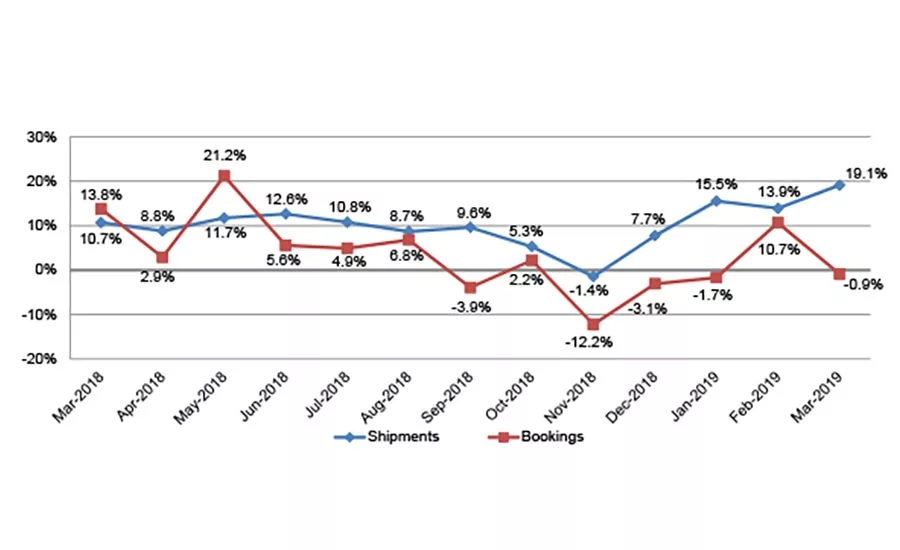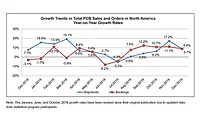North American Printed Circuit Board Sales Growth Remains Strong in March 2019
Total North American printed circuit board shipments in March 2019 were up 19.1% compared to the same month last year.

IPC-Association Connecting Electronics Industries® recently announced the March 2019 findings from its North American Printed Circuit Board (PCB) Statistical Program. Year-over-year growth in March was strong for sales but slipped into negative territory for orders, while the book-to-bill ratio retreated to parity at 1.00.
Total North American PCB shipments in March 2019 were up 19.1% compared to the same month last year. Year-to-date sales growth as of March was 16.4%. Compared to the preceding month, March shipments jumped 32.9%.
PCB bookings in March decreased 0.9% year-over-year, bringing year-to-date order growth down to a positive 2.4%. Bookings in March were up 10.1% from the previous month.
“Strong sales for the North American PCB industry in March, combined with lackluster order growth, brought the book-to-bill ratio down to 1.00, its lowest level in more than two years,” said Sharon Starr, IPC’s director of market research. “Year-over-year sales growth has outpaced order growth for the past 10 months, indicating the likelihood of slowing sales growth in the coming months.”
The book-to-bill ratios are calculated by dividing the value of orders booked over the past three months by the value of sales billed during the same period from companies in IPC’s survey sample. A ratio of more than 1.00 suggests that current demand is ahead of supply, which is a positive indicator for sales growth over the next three to 12 months. A ratio of less than 1.00 indicates the reverse.
Year-on-year and year-to-date growth rates provide the most meaningful view of industry growth. Month-to-month comparisons should be made with caution as they reflect seasonal effects and short-term volatility. Because bookings tend to be more volatile than shipments, changes in the book-to-bill ratios from month to month might not be significant unless a trend of more than three consecutive months is apparent. It is also important to consider changes in both bookings and shipments to understand what is driving changes in the book-to-bill ratio.
Additional information is available at www.ipc.org.
Looking for a reprint of this article?
From high-res PDFs to custom plaques, order your copy today!





